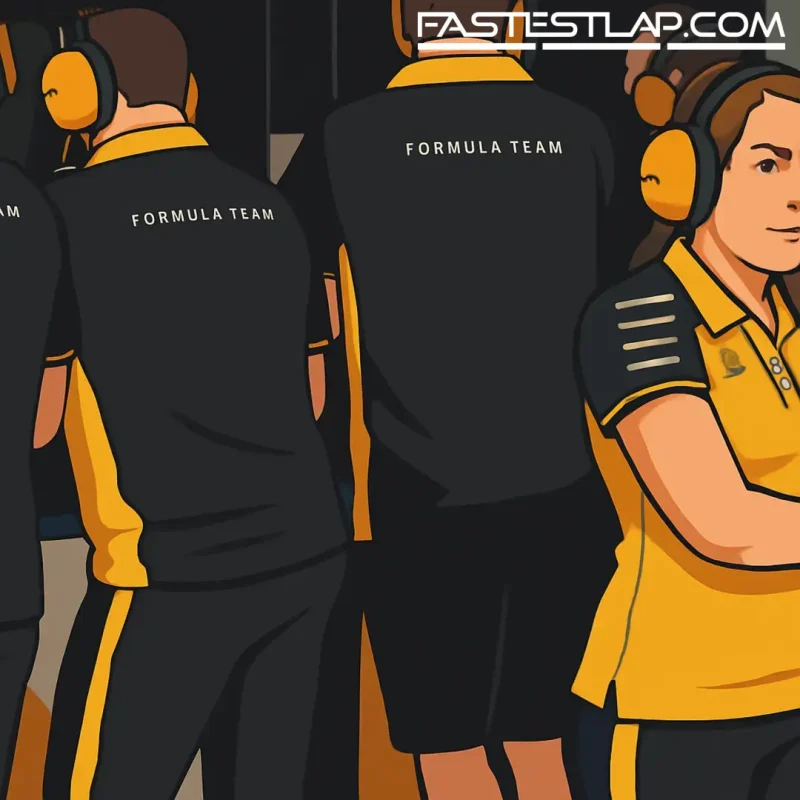McLaren’s Sophie Ogg to depart as F1’s comms shuffle rolls on; Audi’s Stalmann also exits
McLaren will bid farewell to its Formula 1 communications director Sophie Ogg at the end of this month, with the Azerbaijan Grand Prix set to be her last weekend in papaya. It’s a significant change for a team that’s leaned heavily on a steady, seasoned comms hand as its competitive profile has surged back to the front.
Ogg joined McLaren in February 2022 after more than a decade at Williams, where she served as head of communications from 2010. Her exit is understood to be driven by personal life changes and the long commute to Woking. McLaren has begun the search for her successor, seven months on from the departure of chief communications officer Steve Atkins, who stepped down at the end of February for personal reasons.
Ogg’s tenure coincided with McLaren’s return to regular podium contention and heightened media scrutiny, and she leaves with the comms operation stable, modernised and tightly aligned to the team’s drivers and leadership. Those are big shoes to fill as the team juggles an ever-busier calendar and a news cycle that rarely sleeps.
It’s not just McLaren resetting the press office. Audi’s de facto head of communications Guido Stalmann will also vacate his post at the end of September. Stalmann, officially the manufacturer’s director of partnerships, communication and business affairs, has been embedded since December 2021, steering Audi’s start-up communications strategy and the integration phase with Sauber.
Stalmann’s résumé has form for this kind of heavy lift. He previously oversaw BMW’s communications during its run as engine supplier to Williams at the turn of the millennium and then its works effort with Sauber in 2006. Audi now heads into its next chapter with one of its early architects moving on—another key handover as the project continues to firm up its F1 foundations.
These moves land in a year where F1’s comms corridors have been anything but quiet. In July, Red Bull dismissed head of communications Paul Smith, a decision that arrived alongside the company relieving Christian Horner of his operational duties as CEO and team principal. Red Bull has yet to name a permanent replacement for Smith, but has brought back former comms chief Eric Silbermann to advise and oversee senior managers Alice Hedworth and Anna Webster. Former Red Bull communications manager Julianna Jackson, meanwhile, has resurfaced at Williams, effective from the Azerbaijan GP weekend.
There’s movement outside the paddock, too. Former Aston Martin chief communications officer Adrian Atkinson has resurfaced at General Motors, taking on the newly created role of executive director, global motorsports communications. Announcing his move, Atkinson called it “a huge privilege” and said he’ll lead comms for GM’s programmes across Formula 1, IMSA, the FIA World Endurance Championship, INDYCAR and NASCAR. He also nodded to the company’s F1 plans: “I had the pleasure to meet President Mark Reuss, and he shared GM’s exciting plans for the Cadillac F1 project with TWG Motorsports.”
Amid the churn, a few familiar figures continue to anchor their teams. The longest-serving head of communications in the paddock remains Fabiana Valenti of Racing Bulls, who’s been with the Faenza operation since the Minardi days in 2000 and has recently shifted into a more factory-focused role. Over at Mercedes, Bradley Lord—on board since 2011 and now chief communications officer and team representative under Toto Wolff—continues to set the tone for the Brackley team’s messaging. And at Aston Martin, Will Hings, head of media and communications since the Force India era in 2011, now works alongside chief communications officer Luke Skipper, who stepped in following Atkinson’s departure.
If there’s a throughline here, it’s that comms in modern F1 is no longer reactive housekeeping. It’s strategy. It’s narrative control. It’s culture-building, sponsor care, reputation management and crisis response, often all in the space of a single race weekend. As teams scale up and expectations harden, the people behind the microphones and media guides wield quiet but significant influence.
McLaren now faces the task of replacing a leader who helped shepherd the team through a pivotal three-year spell—and did it while the spotlight grew hotter and the story got louder. Audi, meanwhile, hands over a complex integration brief at a crucial moment in its programme. And across the grid, the dominoes continue to fall.
The names rarely show up on timing screens. But if you want to know who’s shaping the story you hear on a Sunday night, start with the people leaving the paddock with laptops and three phones. They’re the ones who make sure the message lands.




